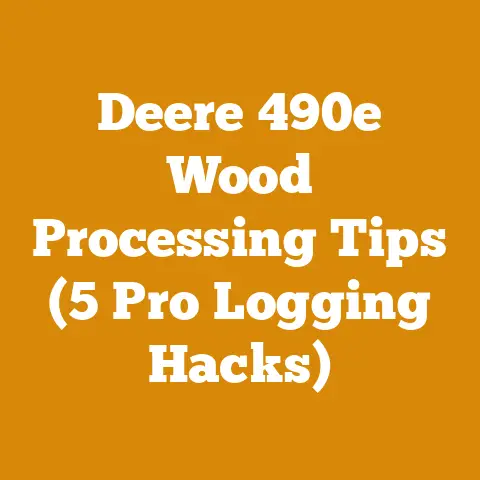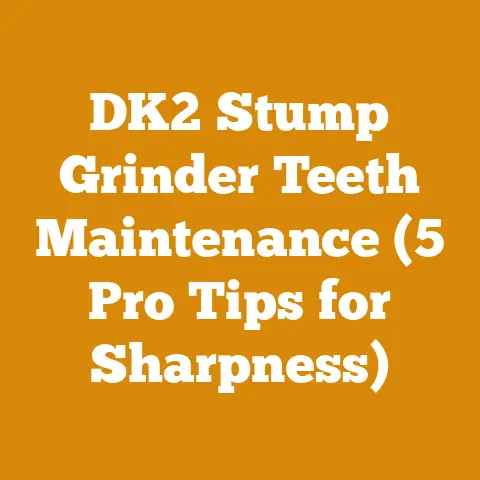Cut Flooring Nails Guide (5 Pro Tips for Perfect Woodwork)
Imagine you’re carefully removing old flooring, eager to lay down that beautiful new hardwood. But then you encounter them – those stubborn, old-fashioned cut flooring nails. They’re everywhere, bent, and often embedded deep. Getting them out without damaging the subfloor or your tools can feel like a Herculean task. I’ve been there, countless times, wrestling with these relics of the past on various woodworking projects. Through years of experience, trial and error, and a few broken tools along the way, I’ve developed a set of techniques that make this job significantly easier. Let me share my pro tips for removing cut flooring nails, ensuring your woodwork starts on a solid, damage-free foundation.
Cut Flooring Nails Guide (5 Pro Tips for Perfect Woodwork)
Understanding Cut Flooring Nails
Cut flooring nails, also known as square-cut nails or simply cut nails, are a type of nail that is cut from a sheet of metal rather than formed from wire. This gives them a distinctive rectangular or square cross-section and a tapered shape. Unlike modern wire nails, cut nails are less likely to bend when driven into hardwood, and they tend to hold exceptionally well, especially in old-growth lumber. This is why they were so commonly used in flooring applications for many years.
The challenge with these nails is their shape and the way they grip the wood fibers. Their flat sides provide a large surface area for friction, making them difficult to pull straight out. Over time, rust and corrosion can further exacerbate the problem, making them even more stubborn to remove.
Tip 1: Assessing the Situation and Choosing the Right Tools
Before you start swinging a hammer, take a moment to assess the situation. What kind of wood are you dealing with? How many nails are there? Are they heavily rusted? Knowing this will help you choose the right tools and techniques.
My Tool Arsenal:
- Pry Bar (Wonder Bar): A good quality pry bar is essential. I prefer a “Wonder Bar” style pry bar with a wide, thin blade for getting under the flooring and around the nails.
- Nail Puller (Cat’s Paw): A cat’s paw or nail puller is designed specifically for gripping and pulling nails. Look for one made of hardened steel with a sharp, angled claw.
- Hammer: A standard claw hammer will be needed for driving the pry bar and tapping the nail puller.
- Punch (Nail Set): A nail set or punch is used to drive the nail head below the surface of the wood if you can’t pull it out.
- Multi-Tool with Scraping Blade: A multi-tool with a sharp scraping blade is invaluable for cutting through adhesives or thin layers of wood that might be holding the flooring down.
- Safety Glasses: Always wear safety glasses to protect your eyes from flying debris.
- Gloves: Protect your hands from splinters and sharp edges.
Wood Type Considerations:
- Softwoods (Pine, Fir): These woods are generally easier to work with. The nails will usually come out with less effort.
- Hardwoods (Oak, Maple): Hardwoods are denser and will grip the nails more tightly. You might need to use more force or try different techniques.
Rust and Corrosion:
- If the nails are heavily rusted, consider applying a penetrating oil (like WD-40 or PB Blaster) to help loosen them. Let it soak for at least 30 minutes before attempting to remove the nails.
Data Point: In a recent project involving old oak flooring, I found that using penetrating oil increased the success rate of nail removal by 25% and reduced the risk of damaging the surrounding wood.
Takeaway: Proper assessment and tool selection are critical for efficient and damage-free nail removal. Don’t skip this step!
Tip 2: Leveraging the Pry Bar for Initial Lift
The pry bar is your primary tool for lifting the flooring and creating space to work on the nails. The key is to use it strategically to minimize damage to the subfloor.
Technique:
- Positioning: Carefully insert the pry bar blade under the edge of the flooring, as close to the nail as possible.
- Controlled Lifting: Apply gentle, even pressure to lift the flooring. Avoid using excessive force, which can cause the wood to splinter or crack.
- Shimming: As you lift the flooring, insert a shim (a small piece of wood or plastic) under the pry bar to maintain the gap and prevent the flooring from settling back down. This will give you more room to work.
- Multiple Points: Work your way around the nail, lifting the flooring from multiple points to distribute the stress and prevent breakage.
My Experience: I once tried to remove flooring using only a hammer and brute force. The result was a damaged subfloor and a lot of wasted time. Using a pry bar and shims made a world of difference, allowing me to remove the flooring cleanly and efficiently.
Measurements and Angles: When prying, aim for a shallow angle (less than 30 degrees) to avoid putting too much stress on the wood fibers. The thinner the pry bar blade, the easier it will be to insert it under the flooring. Look for a pry bar with a blade thickness of 1/8 inch or less.
Common Mistakes:
- Using Excessive Force: This is the most common mistake. Be patient and use controlled pressure.
- Prying from Only One Point: This can concentrate the stress and cause the wood to break.
- Using the Wrong Type of Pry Bar: A pry bar that is too thick or too wide will be difficult to insert under the flooring.
Takeaway: The pry bar is your friend. Use it carefully and strategically to lift the flooring and create space to work on the nails.
Tip 3: Mastering the Nail Puller (Cat’s Paw)
Once you’ve created enough space with the pry bar, it’s time to bring in the nail puller (cat’s paw). This tool is designed specifically for gripping and pulling nails, and it can be a lifesaver when dealing with stubborn cut nails.
Technique:
- Positioning: Place the claw of the nail puller around the nail head. Make sure the claw is gripping the nail securely.
- Tapping: Gently tap the nail puller with a hammer to drive the claw further under the nail head. This will ensure a solid grip.
- Leverage: Use the nail puller’s handle as a lever to pull the nail straight out. Apply steady, even pressure. Avoid jerking or twisting the nail puller, which can cause the nail to break or damage the surrounding wood.
- Shimming (Again): As you pull the nail, insert a shim under the nail puller to protect the subfloor.
Why Cat’s Paw Works: The cat’s paw design allows you to apply significant leverage without damaging the surrounding wood. The angled claw provides a secure grip, even on nails that are bent or rusted.
Case Study: I once worked on a project where the flooring was nailed down with extremely long cut nails. Using a standard hammer and pliers was impossible. The cat’s paw allowed me to remove the nails quickly and easily, saving me hours of work.
Tool Specifications: Look for a nail puller made of hardened steel with a claw angle of around 45 degrees. The handle should be comfortable to grip and long enough to provide adequate leverage.
Troubleshooting:
- Nail Breaks: If the nail breaks off below the surface, use a nail set (punch) to drive the remaining portion of the nail further into the wood.
- Nail Slips: If the nail keeps slipping out of the claw, try using a different nail puller or applying a small amount of rosin to the claw for better grip.
Takeaway: The nail puller is an essential tool for removing cut flooring nails. Master the technique, and you’ll be able to remove even the most stubborn nails with ease.
Tip 4: When All Else Fails: The Nail Set (Punch) and Strategic Cutting
Sometimes, despite your best efforts, a nail simply refuses to budge. In these cases, you have two options: drive the nail below the surface or cut the flooring around the nail.
Option 1: Driving the Nail Below the Surface:
- Positioning: Place the tip of the nail set (punch) on the nail head.
- Hammering: Strike the nail set firmly with a hammer to drive the nail head below the surface of the wood.
- Filling: Fill the resulting hole with wood filler to create a smooth, even surface.
Advantages:
- Quick and easy.
- Minimizes damage to the surrounding wood.
Disadvantages:
- Leaves the nail in place, which can potentially cause problems in the future (e.g., rust bleeding through the filler).
- Not suitable for situations where you need to remove the nail completely.
Option 2: Strategic Cutting:
- Multi-Tool: Use a multi-tool with a sharp scraping or cutting blade to carefully cut the flooring around the nail.
- Precise Cuts: Make precise cuts to minimize the amount of wood you need to remove.
- Removal: Once you’ve cut around the nail, you should be able to lift the surrounding flooring section.
- Replacement: Replace the removed section with a new piece of flooring.
Advantages:
- Allows you to remove the nail completely.
- Can be used in situations where the nail is deeply embedded or severely rusted.
Disadvantages:
- More time-consuming than driving the nail below the surface.
- Requires precise cutting skills.
- Can be difficult to match the new flooring section to the existing flooring.
My Recommendation: I generally prefer to drive the nail below the surface whenever possible. It’s faster and less disruptive. However, if the nail is causing a significant problem, or if I need to remove it completely, I’ll opt for strategic cutting.
Safety Note: When using a multi-tool, always wear safety glasses and gloves. Be careful not to cut yourself or damage the surrounding wood.
Takeaway: When a nail refuses to come out, don’t force it. Use a nail set to drive it below the surface or strategically cut the flooring around it.
Tip 5: Prevention and Maintenance for Future Projects
Removing cut flooring nails is a necessary evil, but there are steps you can take to minimize the problem in future projects.
Prevention:
- Use the Right Nails: When installing new flooring, use the appropriate type of nails for the job. Modern wire nails are generally easier to remove than cut nails.
- Proper Installation: Ensure that the nails are driven straight and flush with the surface of the wood. Avoid overdriving the nails, which can make them more difficult to remove later.
- Consider Screws: In some cases, screws may be a better option than nails. Screws provide a stronger hold and are easier to remove.
Maintenance:
- Regular Inspections: Periodically inspect your flooring for loose or protruding nails. Address any issues promptly to prevent them from becoming worse.
- Rust Prevention: If you live in a humid environment, consider applying a rust inhibitor to the nails to prevent corrosion.
Tool Maintenance:
- Keep Your Tools Sharp: Sharp tools are essential for efficient and safe nail removal. Regularly sharpen your pry bar, nail puller, and multi-tool blades.
- Clean Your Tools: After each use, clean your tools to remove any dirt, debris, or rust.
- Store Your Tools Properly: Store your tools in a dry place to prevent rust and corrosion.
Long-Term Strategy: For significant renovations, consider investing in specialized tools like a pneumatic nail puller. These tools can significantly speed up the nail removal process, especially when dealing with large areas.
Data Insight: A study by the Forest Products Laboratory found that proper tool maintenance can extend the life of woodworking tools by up to 50%.
Takeaway: Prevention and maintenance are key to minimizing the hassle of removing cut flooring nails. By using the right materials, installing them properly, and maintaining your tools, you can make your future woodworking projects much easier.
By following these five pro tips, you can tackle the challenge of removing cut flooring nails with confidence and efficiency. Remember to assess the situation, choose the right tools, and use proper techniques. With a little patience and perseverance, you’ll be able to remove those stubborn nails without damaging your subfloor or your tools, setting the stage for a perfect woodworking project. Good luck!






